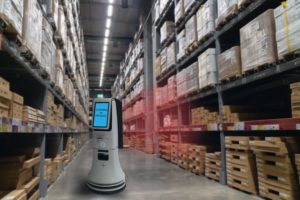Industrial Robots
Robotic arms are increasingly used in industrial or manufacturing applications to handle repetitive tasks and boost production efficiency. Some robots are programmed to consistently carry out repetitive tasks, while others are more flexible in their tasks and execution.
Robotic Arms
 Industrial robots are robots used in manufacturing processes. These robots are designed to move in several directions and either repetitively carry out one task or engage in a variety of tasks. No matter how they are programmed, these robots require cables that can withstand continued flexing.
Industrial robots are robots used in manufacturing processes. These robots are designed to move in several directions and either repetitively carry out one task or engage in a variety of tasks. No matter how they are programmed, these robots require cables that can withstand continued flexing.
Currently manufacturing can be a costly process, but the shift to using robots can ultimately help reduce this cost. People would move to focusing on software and maintenance of the robots as the robots take on the tasks that can be automated.
Logistical Robots
As distribution centers get bigger and bigger, it’s becoming more common to have logistics robots go out to identify the parts needed and bring them back to people to be packed for shipping. Warehouses and distribution centers are being set up in a specific way to allow for robots to fulfill the orders.
Industrial Automation and IoT
IoT, the Internet of Things, is evolving with the growing field of robotics. The collaboration of these fields enable industrial automation and mechanizing repetitive tasks. Using individual and bundled small coaxial cables designed to perform with continuous flexure, IoT enables:
- LTE feeds
- Wi-Fi
- Bluetooth feeds
- GPS feeds
Cables for Industrial Robotics
Safety and productivity are key concerns for industrial robots. Reliable, highly flexible, and durable cables can help minimize downtime and the overall cost of operation. We at Times Microwave Systems have a long heritage of highly flexible and reliable cables for mission-critical industries.
Designed for plastic cable drag chains, the XF-178 cable is ideal for applications requiring constant motion and flexibility, such as robotics and industrial automation technologies in large distribution centers.
As the industrial automation landscape continues to grow and become the future for manufacturing, the XtendedFlex® family will evolve to include a wide range of industrial automation applications, including autonomous vehicles such as skid loaders, as well as unmanned technologies such as electric vertical takeoff vehicles, drones, and more.
Want to know more about cables for industrial robotics and automation?
If you'd like more information on how coaxial cables are used in industrial robots, or to discuss the specifics of an application with an expert, let us know!
Cables for Industrial Robotics
Subscribe to our newsletter!
Interested in receiving email newsletters and other updates from Times? Subscribe now!

